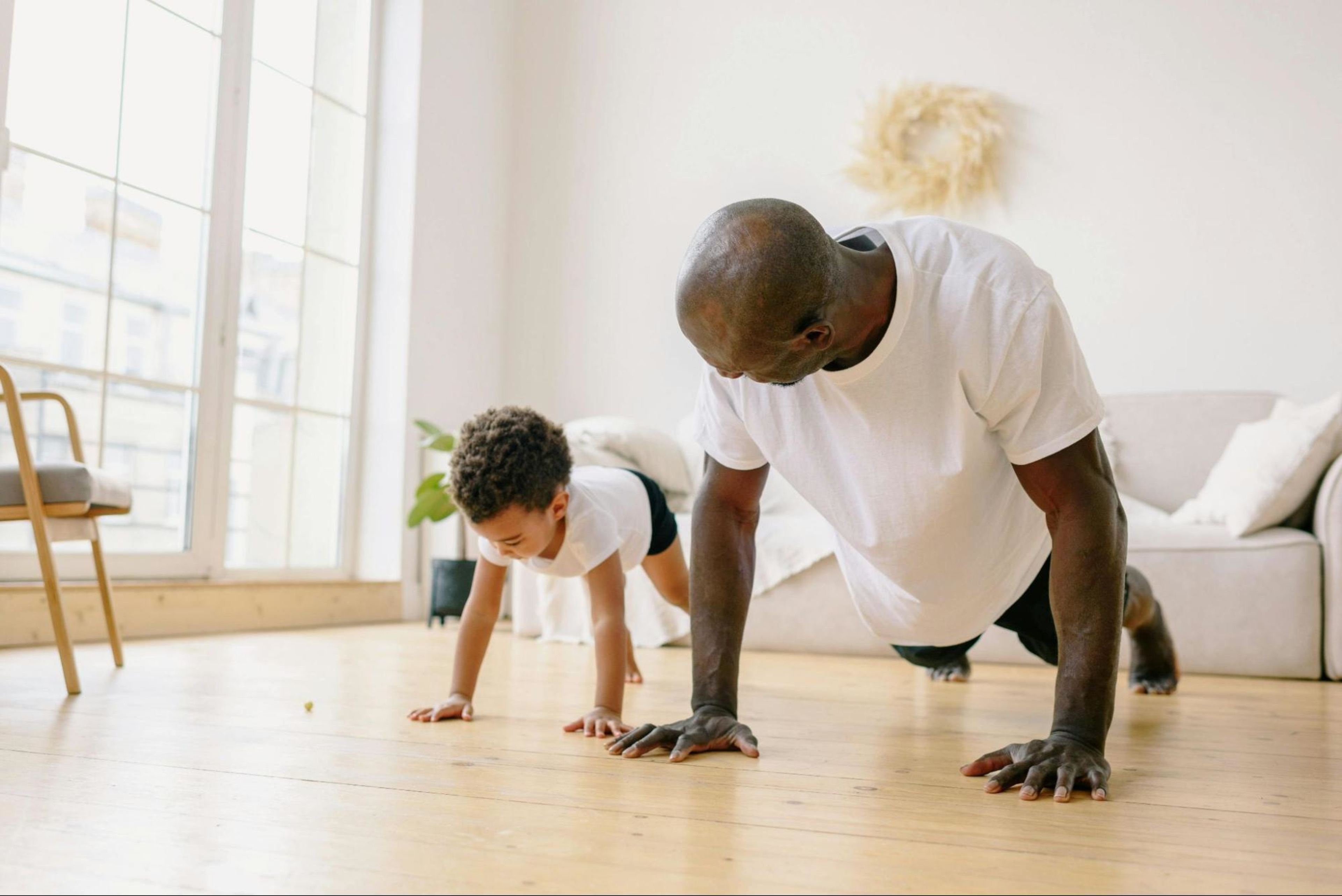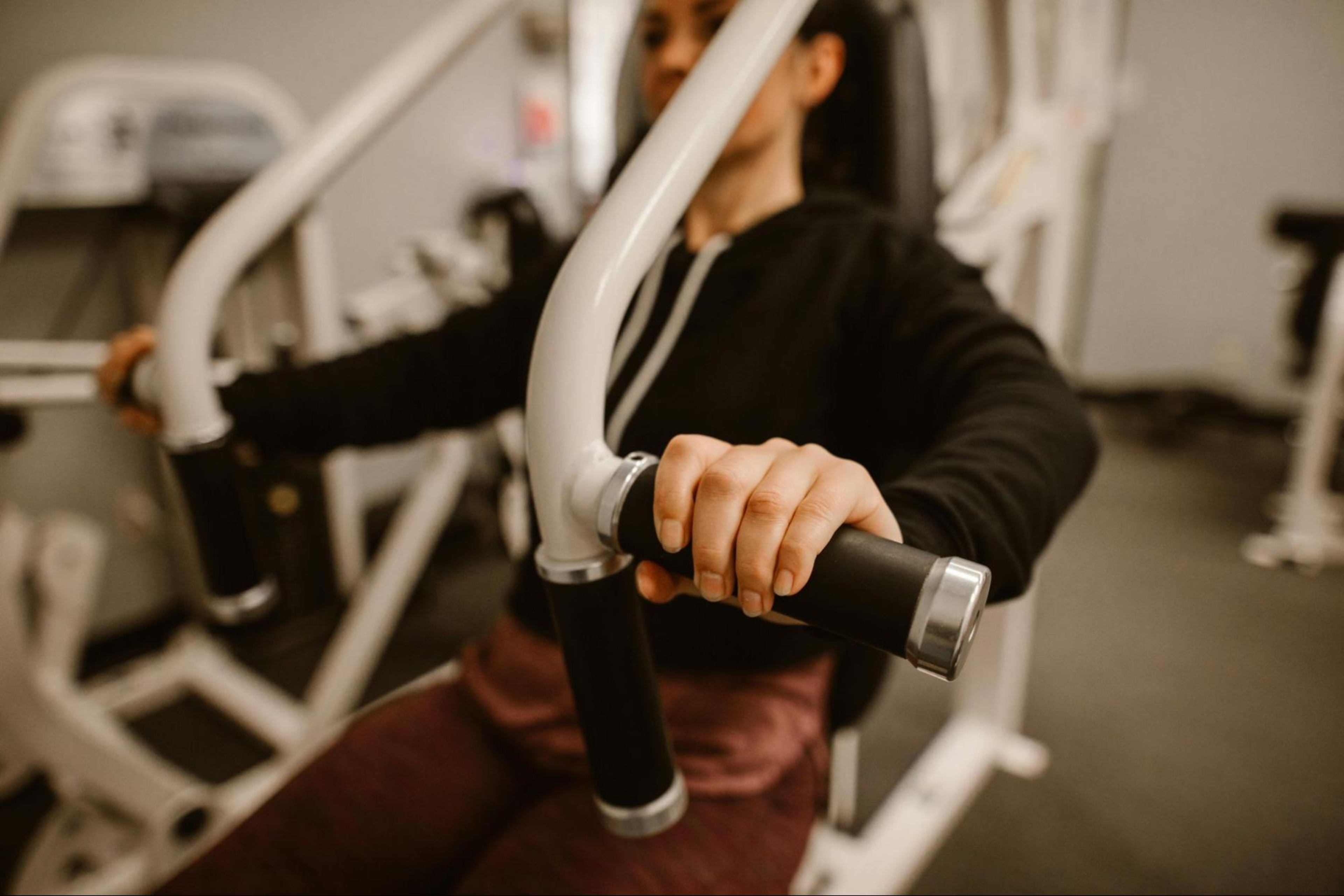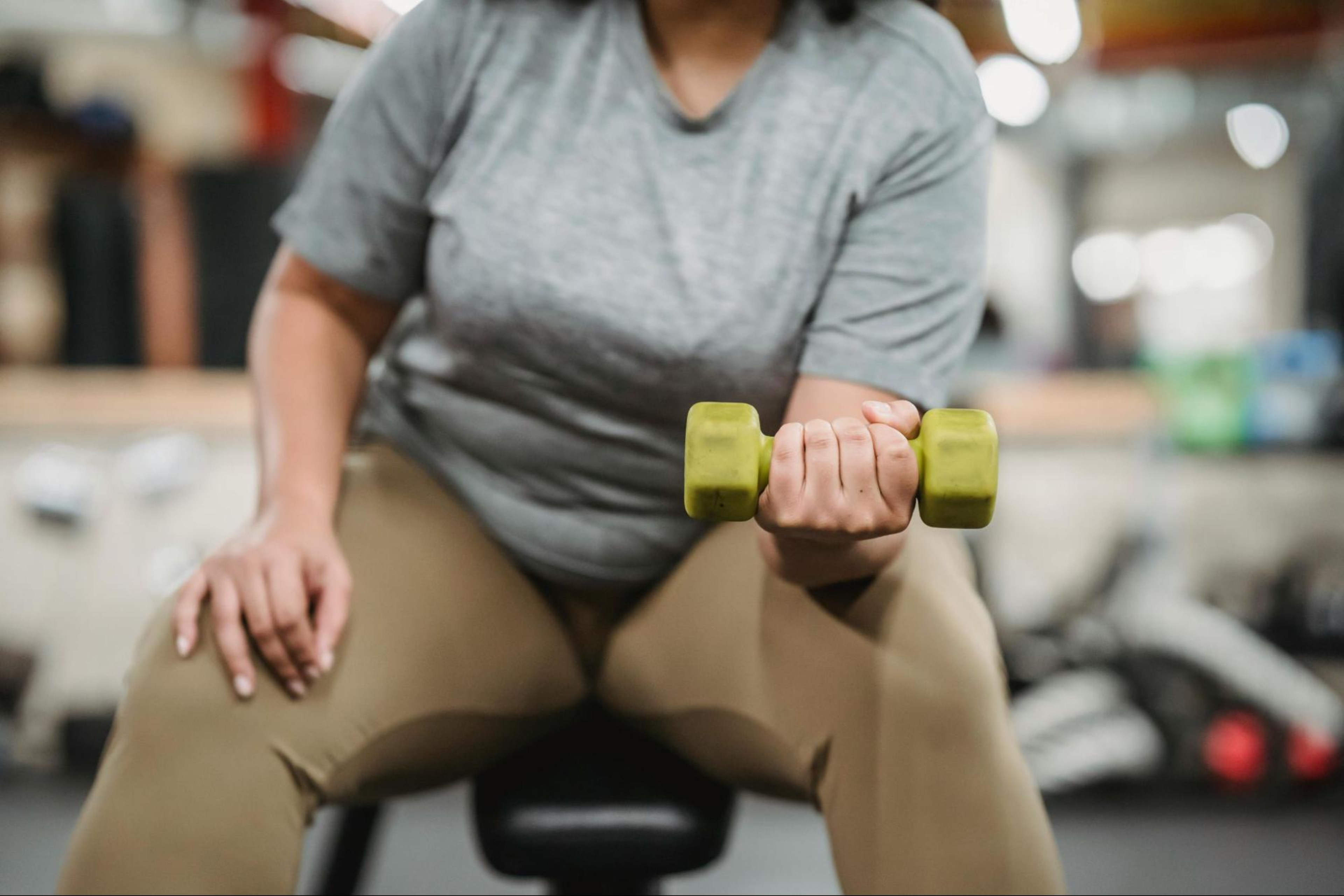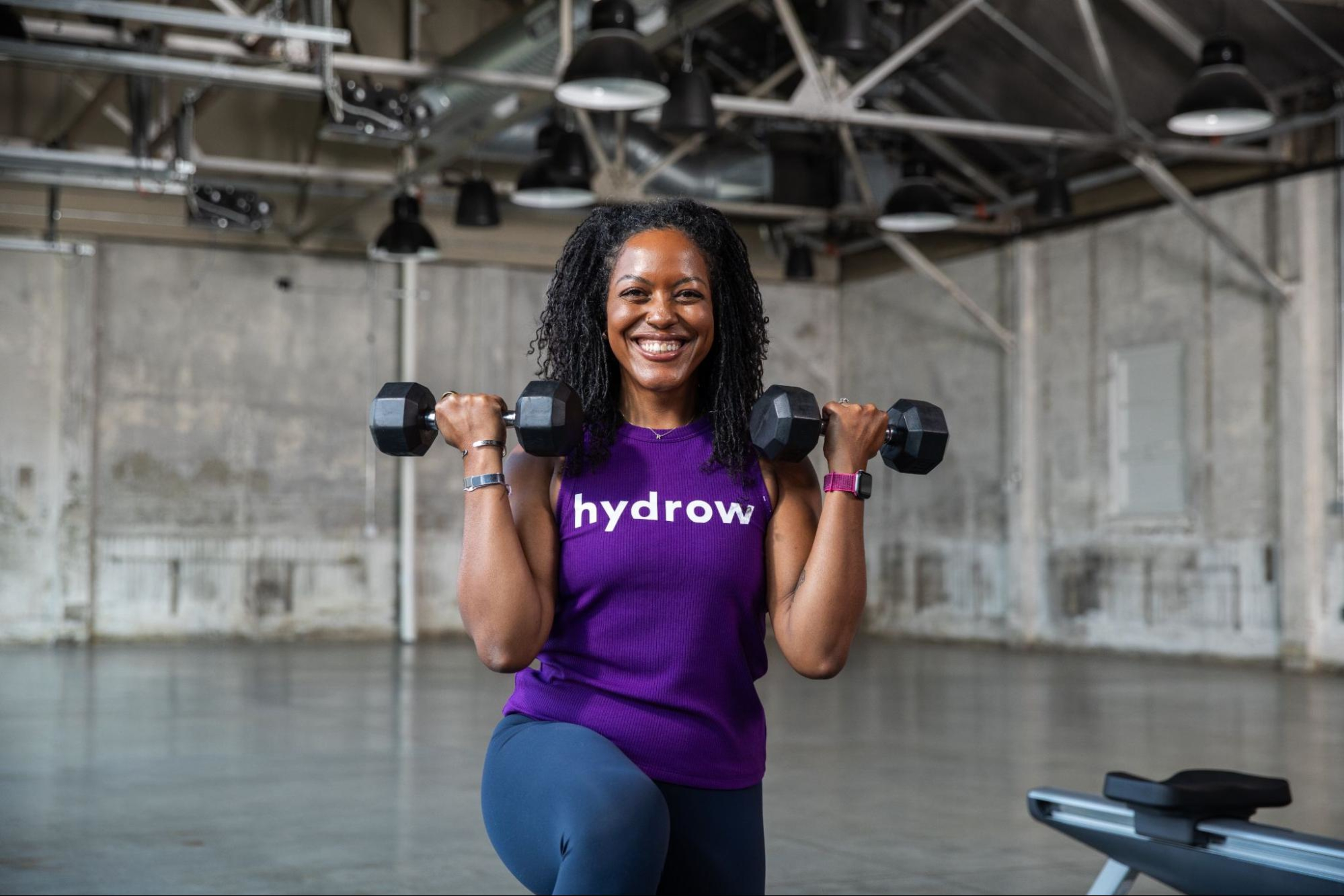How to Start Strength Training in Your 40s: A Guide for Men and Women
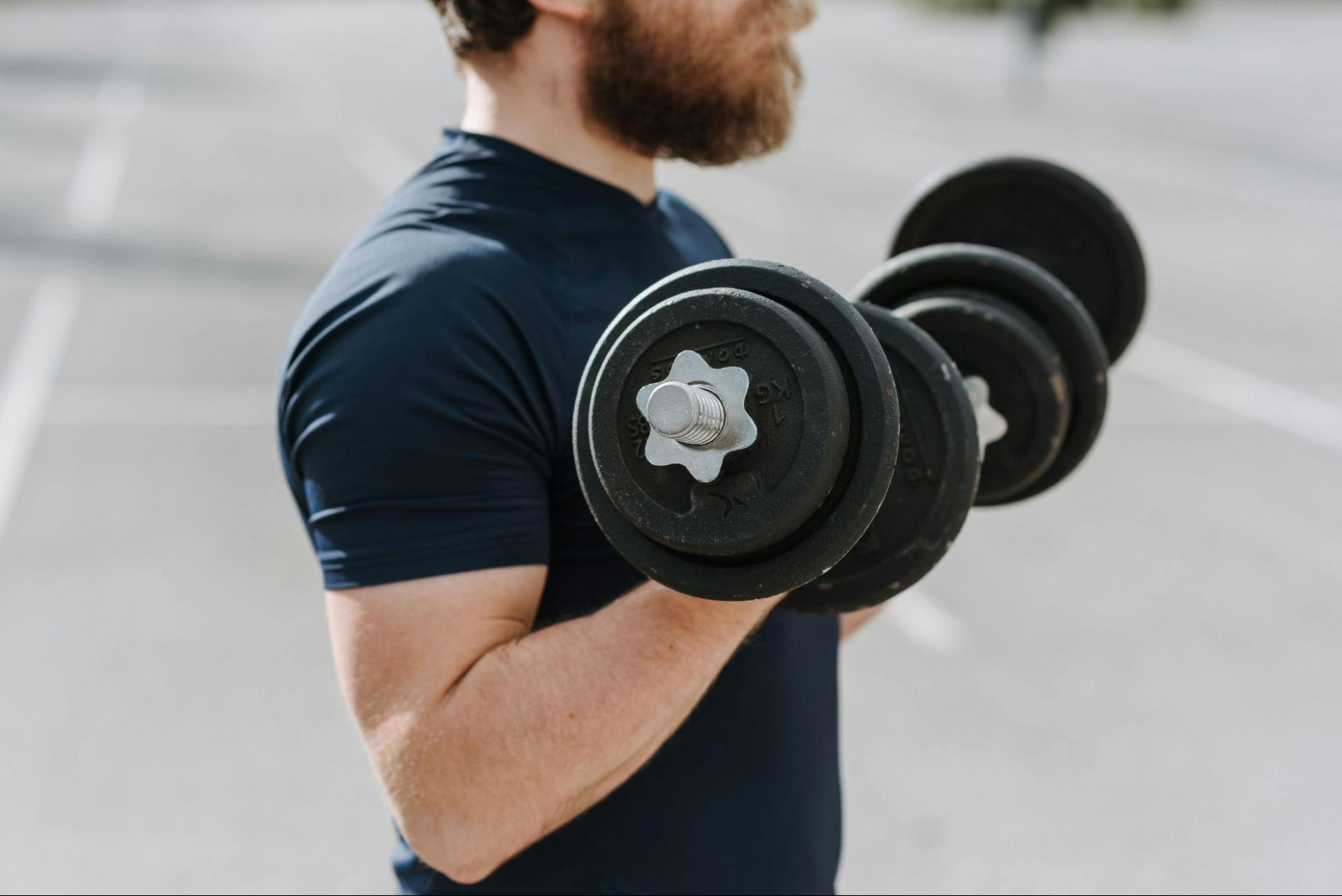
If you’re in your 40s (or clawing on to the dregs of your 30s) and thinking about starting strength training, you’re at the perfect age to begin. This decade is a pivotal time to build lean muscle, maintain bone density, boost your metabolism, and support your long-term health.
Whether you’re looking to stay active, improve your energy, or simply feel stronger in everyday life, strength training offers powerful benefits. This guide will show you how to get started with strength training in your 40s, with practical tips tailored for both men and women.
Check out the following topics:
Let’s get started!
Why strength training in your 40s matters
As we age, our bodies naturally lose muscle mass and bone density—a process known as sarcopenia and osteopenia, respectively. This loss can start as early as our 30s and accelerates in our 40s, leading to declines in strength, balance, and mobility. Without intervention, everyday tasks become harder, and the risk of injury increases.
Strength training is one of the most effective ways to combat these changes. It helps preserve muscle mass, keeps your metabolism active, and supports healthy weight management. Regular resistance training also improves bone density, joint stability, and posture, reducing the risk of osteoporosis and fractures.
Beyond the physical, strength training also has mental and emotional benefits. It can boost your mood, sharpen your focus, and increase your confidence. By making strength training a part of your routine in your 40s, you’re investing in a more vibrant, independent future.
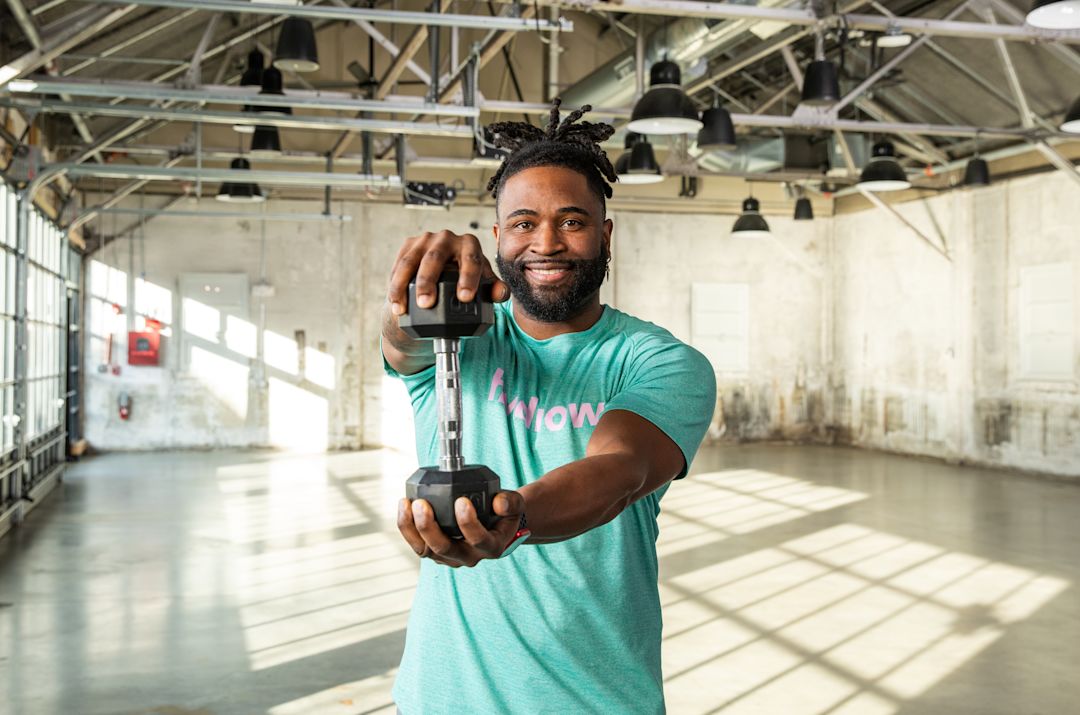
Explore Hydrow's library of strength training workouts.
Starting strength training in your 40s: Tips for safe and effective training
Starting a strength training routine in your 40s can be one of the best decisions you make for your long-term health, energy, and confidence. It is never too late to start something new, especially when the benefits are so profound. While it can be intimidating, these smart, sustainable tips will set you up for success:
Start slow and focus on form: Begin with bodyweight exercises. Prioritize learning proper technique before adding load.
Warm up thoroughly: Spend 5–10 minutes on dynamic stretches or light cardio to prepare your muscles and joints.
Progress gradually: Increase your weights, reps, or sets slowly to allow your body to adapt and reduce injury risk.
Listen to your body: Pay attention to how you feel during and after workouts. It is normal to feel some muscle fatigue and soreness. Learning to distinguish between normal muscle fatigue and pain that could signal an injury is incredibly important as well.
Schedule rest and recovery: Allow at least 48 hours before working the same muscle group again. Recovery is where your body repairs and grows stronger.
Use appropriate equipment: Make sure your gear is in good condition and your workout space is safe and clutter-free.
As a general rule, you’ll want to aim for 2–3 strength sessions per week, with 6–10 reps per exercise and 2–4 sets. Be sure to adjust load, volume, and progression to your individual status. Always tailor to your current strength level, experience, joint health, and recovery.
In your 40s, it’s tempting to chase heavy max lifts, but prioritizing control and form is much safer and more effective. Lifting too heavy with poor form increases the risk of injury and stalls progress. Focus on quality reps, gradual progression, and listening to your body. We recommend starting with bodyweight exercises, focusing heavily on control and technique.
Once you feel comfortable with the movement, you can add light weights, progressing towards heavier weights. Once you start lifting heavier weights, you’ll want to aim to take a 90-second to two-minute rest between each set.
Strength training tips for women in their 40s
Women experience significant hormonal shifts in their 40s, especially around menopause. These changes affect muscle recovery, joint health, and how efficiently you build and maintain lean muscle. Strength training becomes even more essential, helping to counteract muscle and bone loss, support metabolism, and maintain independence.
Common strength training goals for women in their 40s
Many women in their 40s turn to strength training with specific goals in mind, including:
Feeling good and moving confidently: Prioritize mobility, flexibility, and functional strength to move comfortably, reduce stiffness, and enjoy everyday activities with ease.
Building full-body strength: Maintain muscle mass and power to lay the foundation for an active, independent, and fulfilling life for decades.
Improving daily function and preventing injury: Strengthen the core and balance for daily tasks and promote confidence in movement.
Boosting metabolic health: Improve insulin sensitivity and manage weight by elevating resting metabolic rate.
Protecting bone density: Include weight-bearing exercises to boost bone density and reduce osteoporosis risk.
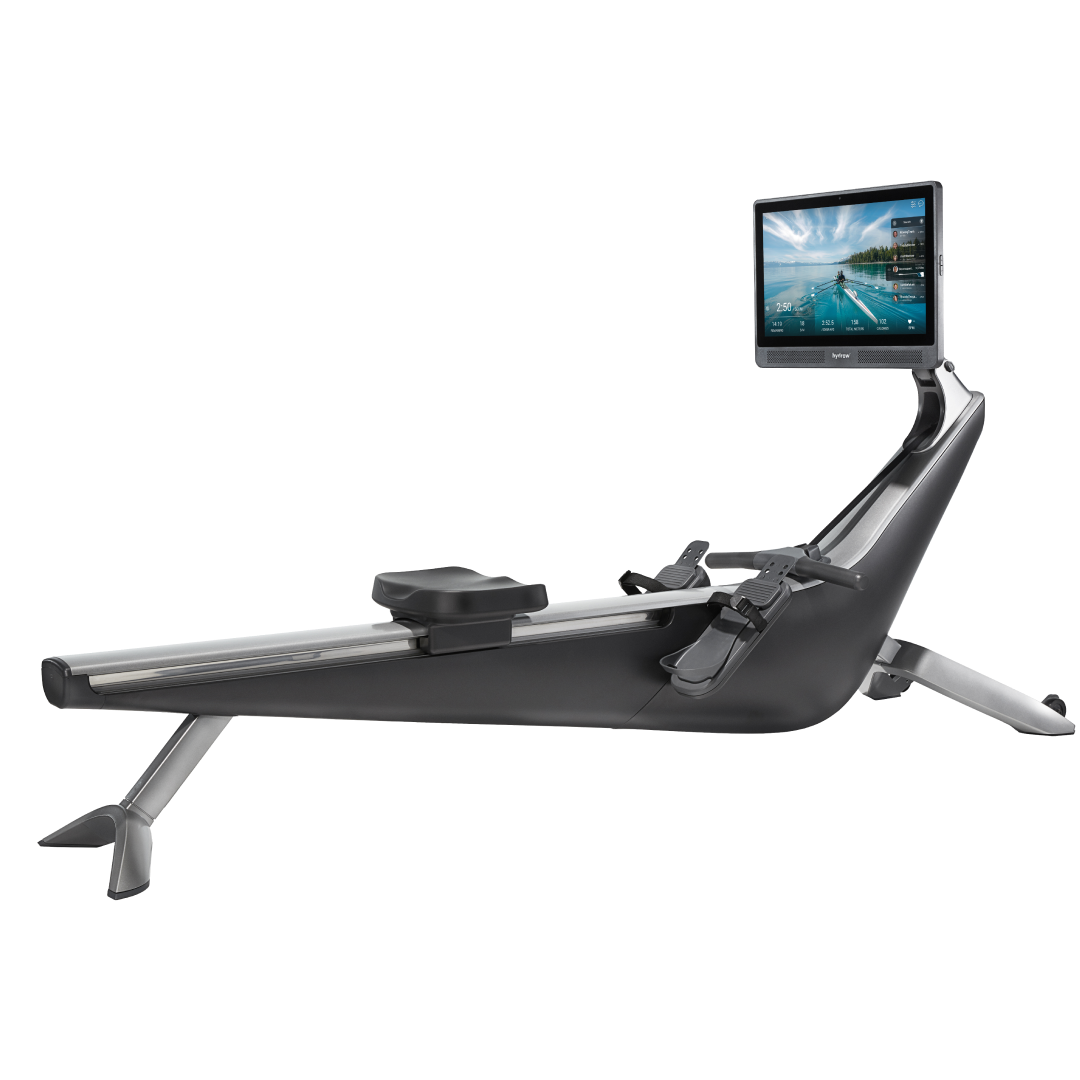
Cardio and strength, combined
Burn calories and build muscle with steady, natural movements.
Sample strength training exercises for women in their 40s
If you’re looking for a place to start, these exercises target major muscle groups, build functional strength, and support overall health and mobility:
1. Squats (bodyweight or dumbbell)
Stand with your feet slightly wider than shoulder-width apart.
Lower your body by bending or hinging at the hips and knees, keeping your chest up (like sitting in a chair).
Descend until your thighs are parallel to the ground while maintaining an engaged core
Push through the soles of your feet with an emphasis on driving through the heels as you return to the starting position.
Repeat.
2. Glute bridges
Start lying down on your back on a mat or other cushioned surface.
Bend your knees and plant your feet about six inches from your butt, hip-width apart. Your arms can be flat by your sides.
Engage your core by tilting your pelvis slightly forward, creating a flat back.
Press through your heels to lift your hips until your body forms a diagonal line from your knees to your hips to your shoulders. Pause here briefly.
Slowly and with control, lower your hips back down.
Continue for your desired number of reps.
3. Step-ups
If using weights, hold them at your sides.
Step onto a bench or stair with one foot.
Drive through your heel to lift your body up.
Step back down and repeat on the other leg.
4. Deadlifts
Stand with your feet hip-width apart, hinge at your hips, and bend your knees to lower your torso to grab the bar.
Grab the bar with your hands just outside your knees—either with both palms facing you or one palm facing you and the other facing away.
Keep your back flat, chest up, and shoulder blades pulled back.
With your hips higher than your knees and your eyes looking slightly ahead, brace your core and drive through your heels to raise the bar.
Keep the bar close to your body—almost grazing your shins and thighs—as you unhinge and stand tall.
Reverse the movement by pushing your hips back first, then bending your knees to lower the bar in a controlled way.
5. Rows
Hold a dumbbell in each hand (or a resistance band anchored under your feet) with palms facing your body.
Hinge forward slightly at the hips, keeping your back flat and core engaged.
Bend your elbows and pull the weights or band toward your torso, squeezing your shoulder blades together at the top.
Slowly lower the weights or release the band back to the starting position with control.
6. Shoulder presses
Stand or sit with your feet shoulder-width apart.
Hold a dumbbell in each hand at shoulder height.
Engage the core for back support.
Press the weights overhead until your arms are fully extended.
Lower the weights back to shoulder height.
7. Dead bugs
Lie on your back with feet off floor, knees aligned above your hips and bent at 90 degrees and your arms straight above your shoulders.
Lower left arm and right leg until just above the floor while maintaining tight abs.
Return to start and repeat with opposite arm and leg.
8. Heel taps
Lie on your back with your knees bent, feet flat on the floor, and arms by your sides. Engage your core by pulling your belly button toward your spine.
Lift your shoulders slightly off the floor, keeping your lower back pressed into the mat.
Slowly move your right hand toward your right heel, then return to center. Repeat on the left side.

Did you know?
Over 90% of Hydrow members are still active one year later.
Strength training myths for women in their 40s
Even in your 40s, many women hesitate to strength train because of common myths—but the truth is, lifting weights is both safe and highly beneficial:
Myth: Strength training will make you bulky.
Reality: Women do not have the testosterone levels required to build large, bulky muscles. Instead, strength training helps develop lean, toned muscles and increases metabolism, supporting a sculpted, strong look—not bulk.
Myth: Cardio is better for weight loss.
Reality: While cardio burns calories, strength training builds muscle, which increases your resting metabolic rate and supports long-term fat loss.
Myth: Strength training isn’t safe for women in their 40s.
Reality: With proper technique and progression, strength training supports joint health, bone density, and hormonal balance, making it a safe and highly effective way for women in their 40s to stay strong and healthy.
The importance of recovery for women in their 40s
Recovery is crucial, especially as hormonal changes can make women more sensitive to inflammation and stress. Schedule rest days, prioritize sleep, and consider gentle activities like walking or yoga between strength sessions. Proper recovery helps prevent overtraining, supports hormone balance, and ensures consistent progress.
Strength training tips for men in their 40s
Men in their 40s experience important changes that can influence muscle mass, strength, energy levels, and recovery. This life stage is a crucial time to embrace strength training: As metabolism and hormone levels shift, prioritizing resistance exercise helps preserve lean muscle, support healthy testosterone levels, and joint health. Starting or elevating a strength routine can boost vitality, improve balance, and reduce the risk of injury, allowing you to stay active and capable for years to come.
The following tips are designed specifically for men in their 40s to make strength training both safe and effective:
Common strength training goals for men in their 40s
Compound lifts: Exercises like squats, deadlifts, bench presses, and rows stimulate multiple muscle groups and maximize efficiency.
Core and mobility: Incorporate planks, side planks, and mobility drills to support posture and prevent injury.
Balance and flexibility: Add stretching and balance exercises to support joint health and overall function.
Sample strength training exercises for men in their 40s
Here are some sample strength training exercises for men in their 40s to incorporate into a well-rounded routine:
1. Squats (dumbbell, kettlebell, or barbell)
Stand with your feet slightly wider than shoulder-width apart.
Lower your body by bending or hinging at the hips and knees, keeping your chest up.
Descend until your thighs are parallel to the ground while maintaining an engaged core
Push through the soles of your feet with an emphasis on driving through the heels as you return to the starting position.
Repeat.
2. Deadlifts
Stand with your feet hip-width apart, hinge at your hips, and bend your knees to lower your torso to grab the bar.
Grab the bar with your hands just outside your knees—either with both palms facing you or one palm facing you and the other facing away.
Keep your back flat, chest up, and shoulder blades pulled back.
With your hips higher than your knees and your eyes looking slightly ahead, brace your core and drive through your heels to raise the bar.
Keep the bar close to your body—almost grazing your shins and thighs—as you unhinge and stand tall.
Reverse the movement by pushing your hips back first, then bending your knees to lower the bar in a controlled way.
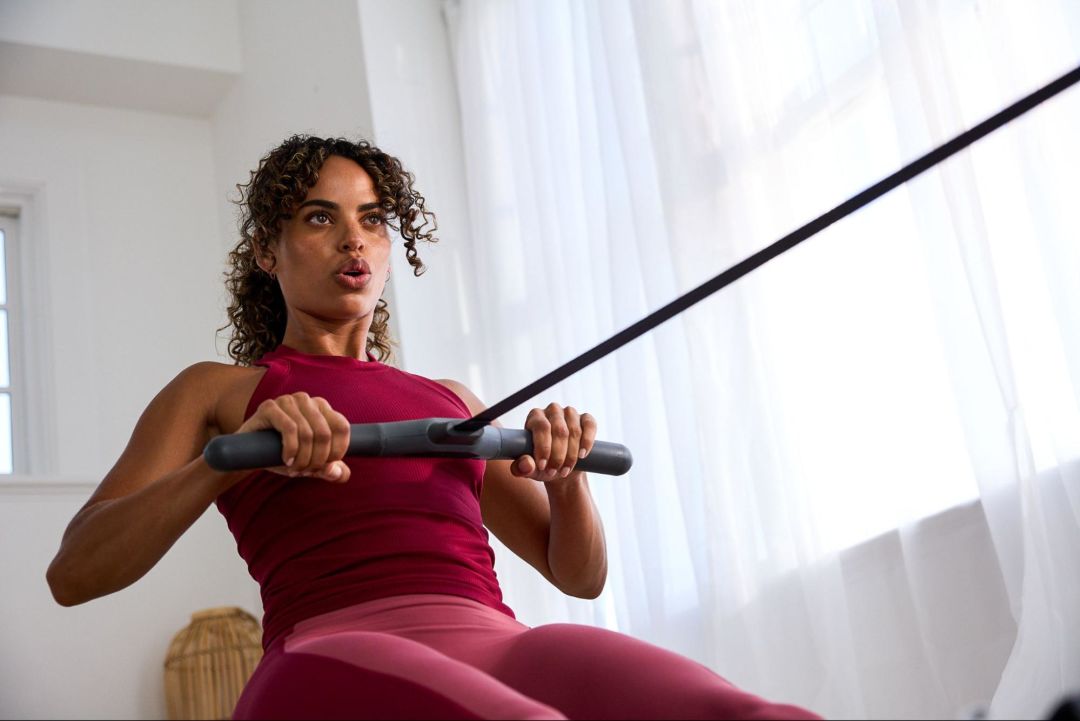
Efficiency for the win.
Work 86% of your muscles in just 20 minutes of rowing with Hydrow.
3. Flat bench press
Lay flat on a bench (or even the floor) with your feet flat for support.
Hold the dumbbells on either side and above your chest with your elbows bent.
Press the dumbbells up until your elbows are straight and squeeze slightly to the middle.
Pause and return to start.
4. Push-ups
Begin with your hands and knees on the floor, then straighten out your legs, with your palms planted directly under your shoulders and your body forming a straight line from head to hips to heels.
Bend your elbows at about 45-degree angles from your torso to lower your chest toward the floor.
When you’re about an inch or two from the ground, press through your palms to push your body back up to the starting position while maintaining an engaged core.
5. Pull-ups
Stand under a pull-up bar with your arms overhead, palms facing away from you.
Grasp the bar firmly (you may need to jump or stand on another piece of gym equipment to do so) with your thumbs wrapped around the bar.
Engage your core and exhale as you pull your body upward. Keep your shoulders back and down.
Aim to pull up until your chest is level with the bar.
Pause here briefly, then lower back down with control until your arms are fully extended.
6. Mini band lat pull-downs
Start standing tall or seated on a bench with your feet planted shoulder-width apart.
Loop a mini resistance band around your wrists.
Raise your arms over your head with your palms facing away from you. Position your hands about shoulder-width apart so there’s tension in the band.
Pull your shoulder blades together and bend your elbows down and out to pull the band apart towards your chest.
Pause here briefly.
Slowly and with control, return your hands above your head without locking out your elbows.
7. Rows
Hold a dumbbell in each hand (or a resistance band anchored under your feet) with palms facing your body.
Hinge forward slightly at the hips, keeping your back flat and core engaged.
Bend your elbows and pull the weights or band toward your torso, squeezing your shoulder blades together at the top.
Slowly lower the weights or release the band back to the starting position with control.
8. Planks
Lower yourself to your knees and place your hands on the floor in front of you in line with your shoulders.
Step your legs behind you.
Hold your body in a straight line on your hands and toes.
Engage your core by concentrating on pulling your navel toward your spine.
Hold this position for your desired amount of time.
9. Lunge
Step forward with one leg, lowering your back knee toward the ground.
Keep your front knee in line with your ankle, not going past the toes, and your back straight.
Push through your front foot to return to standing.
Repeat on the other side.
10. Step-ups
If using weights, hold them at your sides.
Step onto a bench or stair with one foot.
Drive through your heel to lift your body up.
Step back down and repeat on the other leg.

Explore Hydrow’s library of Circuit Training workouts from around the world.
Strength training myths for men over 40
Myth: Strength training is only for young men.
Reality: Men in their 40s can build and maintain muscle, improve metabolism, and support joint health. Strength training is effective at any age, and starting now helps prevent age-related muscle loss.
Myth: Lifting heavy weights is dangerous after 40.
Reality: When performed with proper technique and progressive loads, heavy lifting is safe and beneficial. It strengthens muscles, bones, and connective tissue, reducing the risk of injury and supporting long-term mobility.
Myth: You need to train intensely every day to build muscle in your 40s
Reality: As men age, recovery becomes increasingly important due to slower muscle repair and hormonal changes. Schedule rest days, get adequate sleep, and include active recovery like light cardio or stretching. This approach reduces injury risk and supports long-term progress.
What to expect in your first few weeks of strength training in your 40s
Starting a strength training routine in your 40s comes with a few expected adjustments—here’s what your first few weeks might look like:
Mild soreness: You can expect some muscle soreness (especially if you’re new to strength training) as a result of micro-tears in your muscle fibers caused from overload that will ultimately build muscle. This should subside as your body adapts.
Learning curve: You’ll spend time mastering form and getting comfortable with new movements.
Steady progress: With consistency, you’ll notice improvements in strength, energy, and confidence within a few weeks.
Better sleep and mood: Many people report improved sleep and increased well-being after starting a regular strength routine.
Gradual changes: Visible muscle tone and body composition changes take time—focus on building habits and celebrating small wins.

Explore Hydrow’s library of 5,000+ rowing, circuit training, yoga, Pilates, and mobility workouts.
Time to get lifting!
Strength training in your 40s is one of the best investments you can make in your long-term health. It helps you stay strong, independent, and resilient—both physically and mentally.
Looking for a way to incorporate more strength training into your exercise routine?
Hydrow offers guided strength training workouts for every fitness level, all led by world-class Athletes who coach you through each movement and help you stay consistent. Additionally, our rowing workouts target 86% of your muscles with every stroke, delivering full-body training and real results.
Explore Hydrow’s strength workouts and see how far you can go.
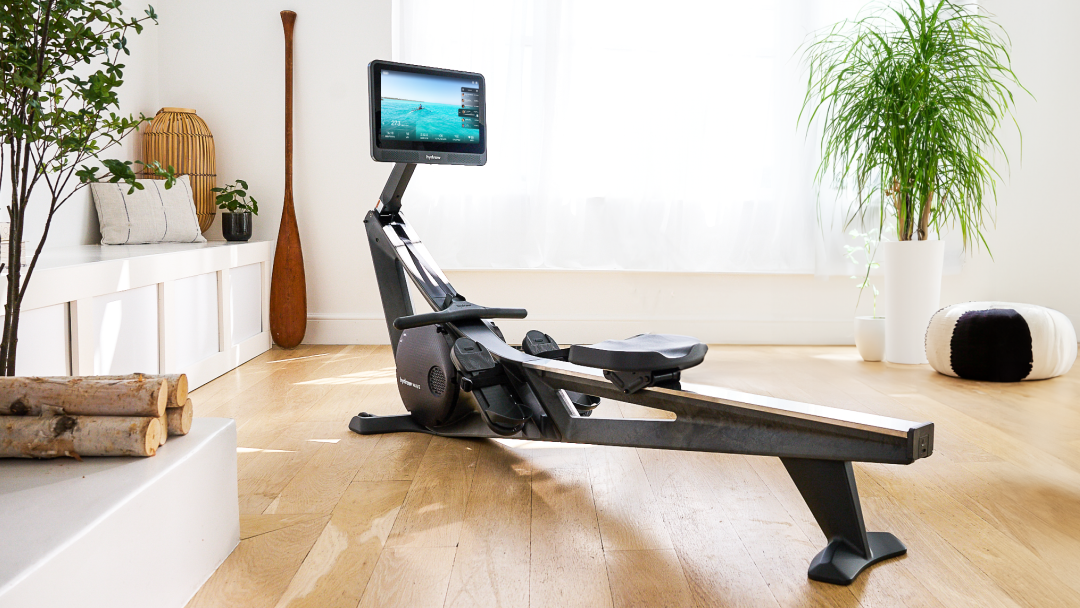
Real strength keeps moving
Learn how working out with Hydrow can help support a fuller, more active life.

